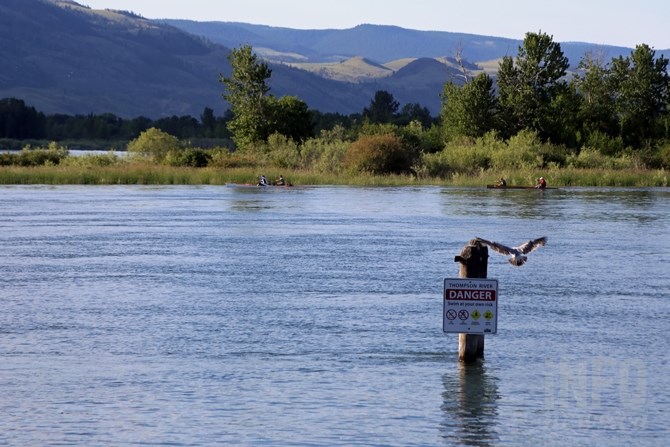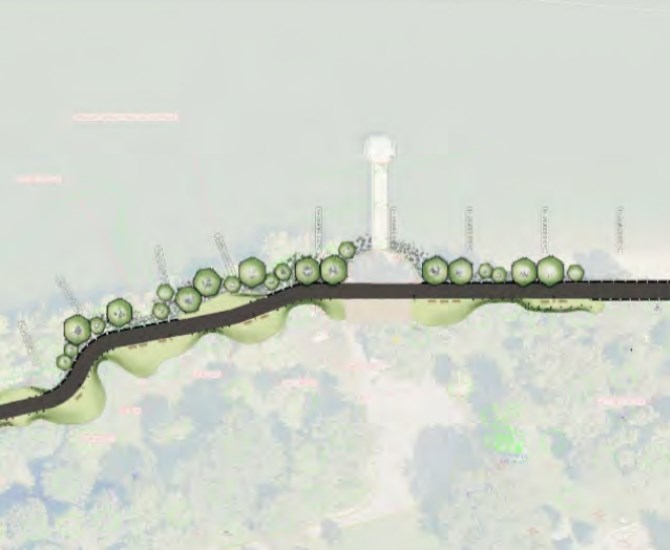
FILE PHOTO.
(JENNIFER STAHN / iNFOnews.ca)
August 12, 2020 - 4:15 PM
A member of the Kamloops Naturalist Club has raised concerns over the City's proposed flooding plan, and hopes council will make efforts to preserve the ecology along the river.
The Riverside Park Flood Protection Project entails installing riprap, a technique using rocks to prevent bank erosion, along the shore of the Thompson River.
Kamloops Naturalist Club representative Jesse Ritcey raised some concerns about the City's proposed use of riprap at yesterday's council meeting, August 11.
"Historically, when the City has used riprap, it has created a dead zone, because it’s just solid rock along the river," Ritcey told iNFOnews.ca. "There’s nothing alive there, there’s nothing that provides habitat."
The project would affect the riverbank beginning 50 meters west of the pier at Riverside Park, which is within a nationally recognized Important Bird Area.
Removing vegetation in this area and replacing it with riprap will remove habitat for birds, insects and fish, Ritcey explains.

Wood ducks are among the bird species that have been spotted in Important Bird Area affected by the City's Flood Protection Project.
Image Credit: Lyn MacDonald
"There’s collapsing biodiversity in B.C. and world wide," he said. "People are realizing that’s an issue, that’s not something we want to see."
In response to Ritcey's concerns, council confirmed they were aware of the importance of the area for wildlife and would be looking into some natural techniques for flood protection wherever feasible.
According to the Flood Protection Project report submitted to council, the cost to protect, manage and restore infrastructure and natural areas due to flooding since 2012 is estimated to be $750,000.
Ritcey said the Naturalist Club will be monitoring the project as it moves forward, hopeful that the City will maintain as much vegetation as possible.
"Moving forward, it could be a good project, it could be a bad project," he said. "It really just depends on the approach that is taken in this area."
Some habitat friendly alternatives include keeping the existing trees and placing riprap carefully around them, anchoring trees along the stream bank and many others.

Screenshot from the administrative report to city council on the Riverside Park Flood Protection Project, Aug. 11, 2020.
Image Credit: City of Kamloops
"It takes a bit more planing and effort but I very much think it’s worth doing," he said. "We want to make sure that the City is really looking at some of these more innovative approaches. We should be moving in the direction of restoring as much riparian areas as possible."
Council approved the project yesterday, and it must now get it approved by the provincial government and Department of Fisheries and Oceans.
"There’s a lot of benefit to going with the more natural route," Ritcey said. "It's whether we’re invested in doing that, whether we care, whether that’s important to us. And I think it should be."
To contact a reporter for this story, email Brie Welton or call (250) 819-3723 or email the editor. You can also submit photos, videos or news tips to the newsroom and be entered to win a monthly prize draw.
We welcome your comments and opinions on our stories but play nice. We won't censor or delete comments unless they contain off-topic statements or links, unnecessary vulgarity, false facts, spam or obviously fake profiles. If you have any concerns about what you see in comments, email the editor in the link above.
News from © iNFOnews, 2020